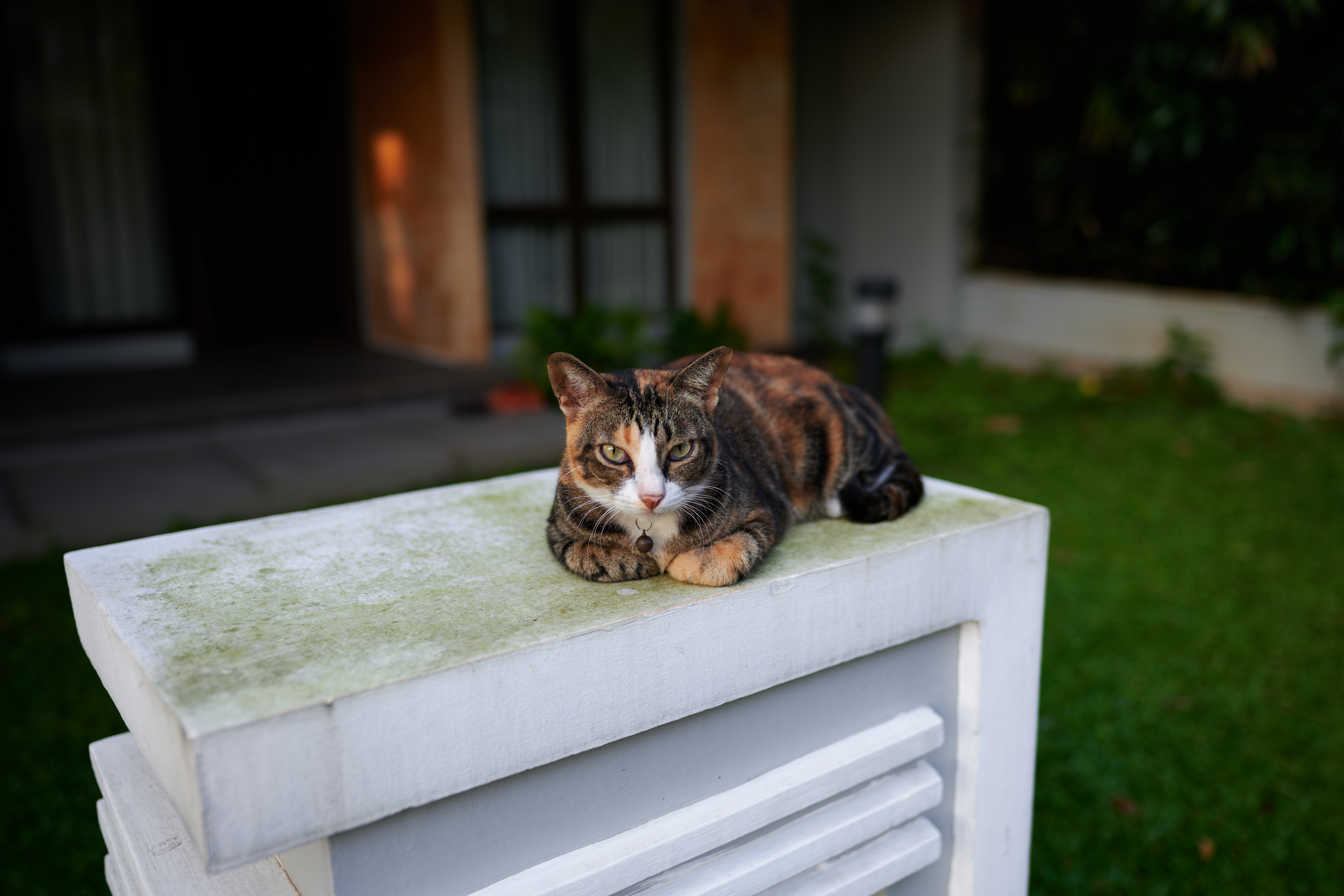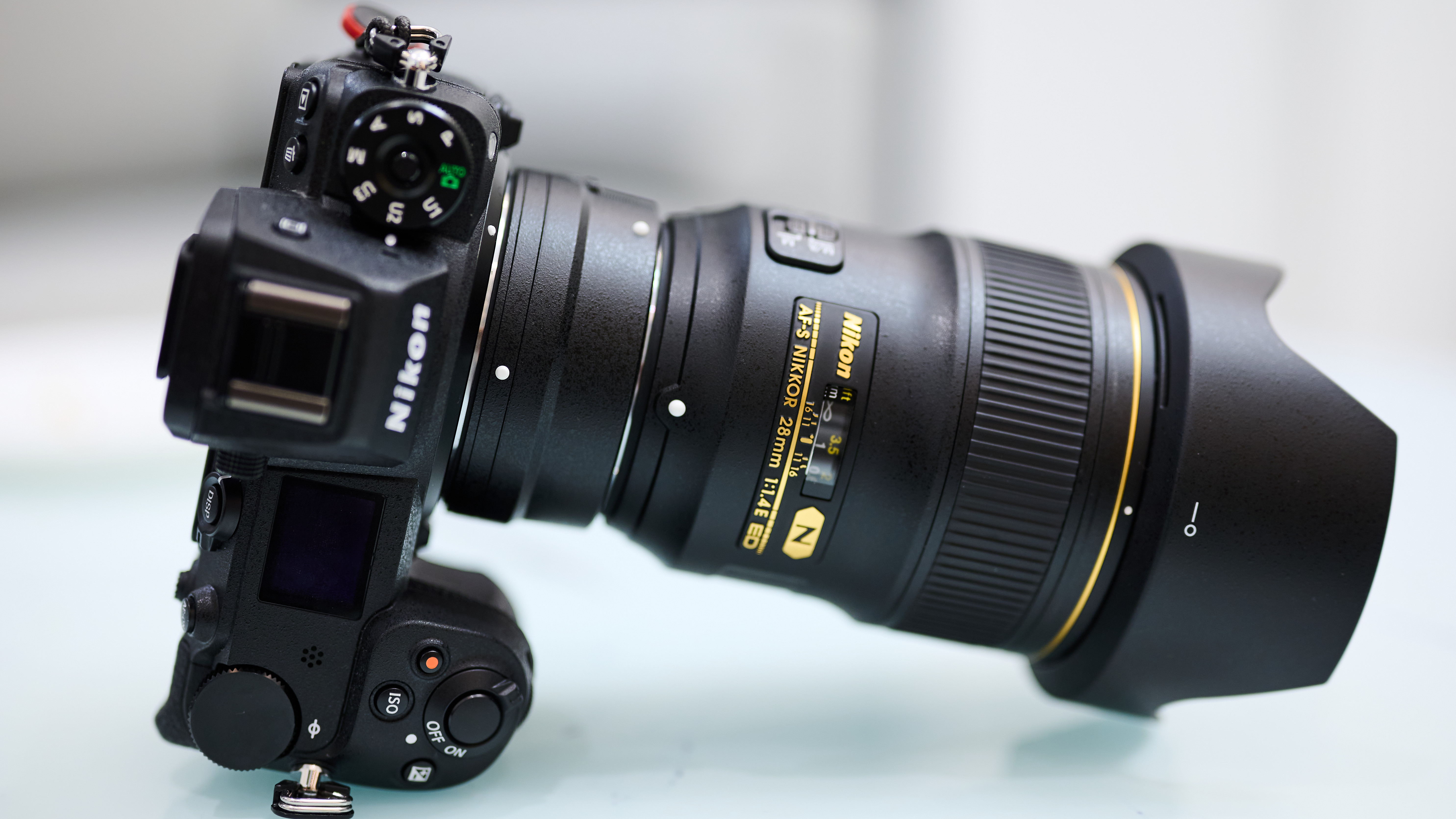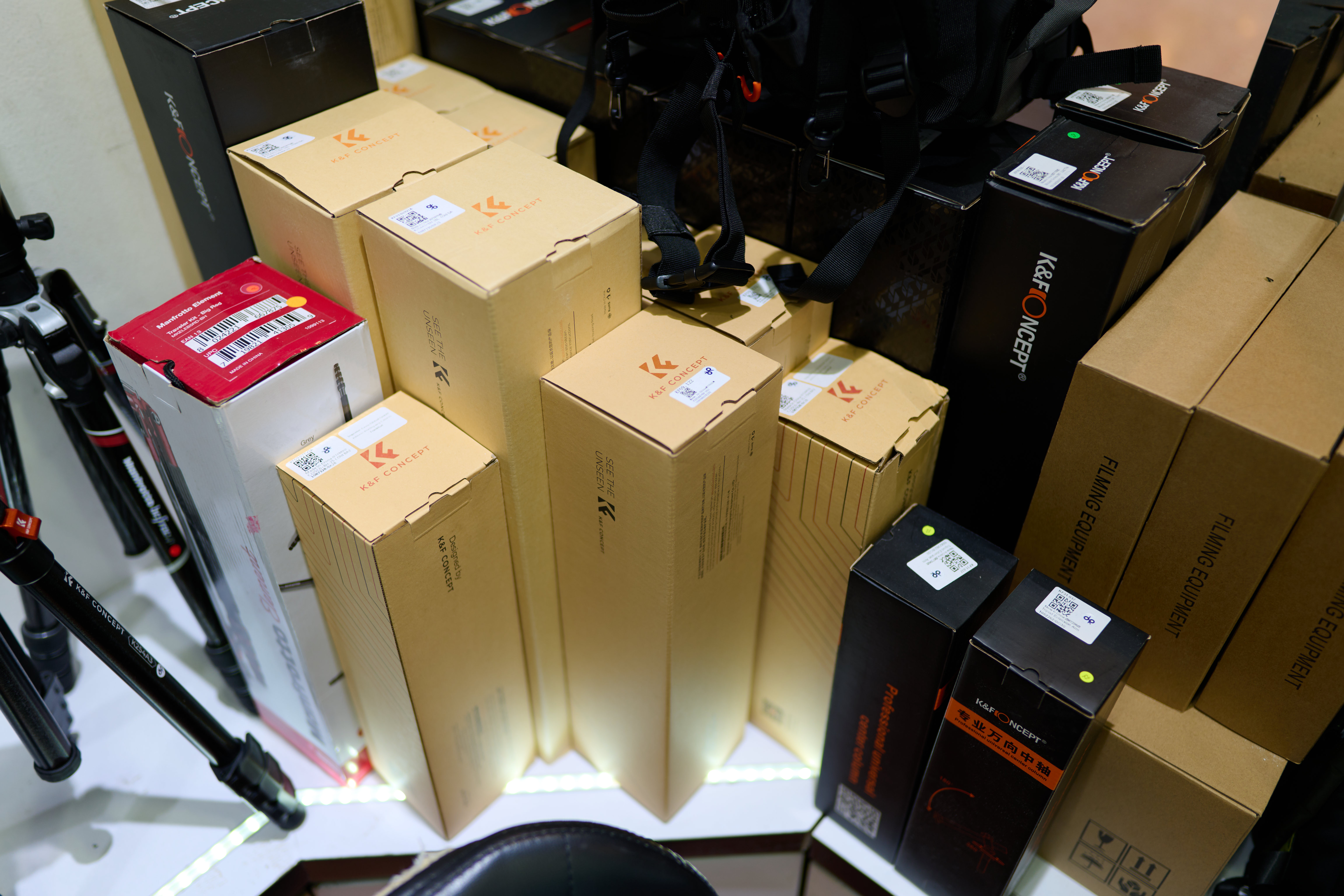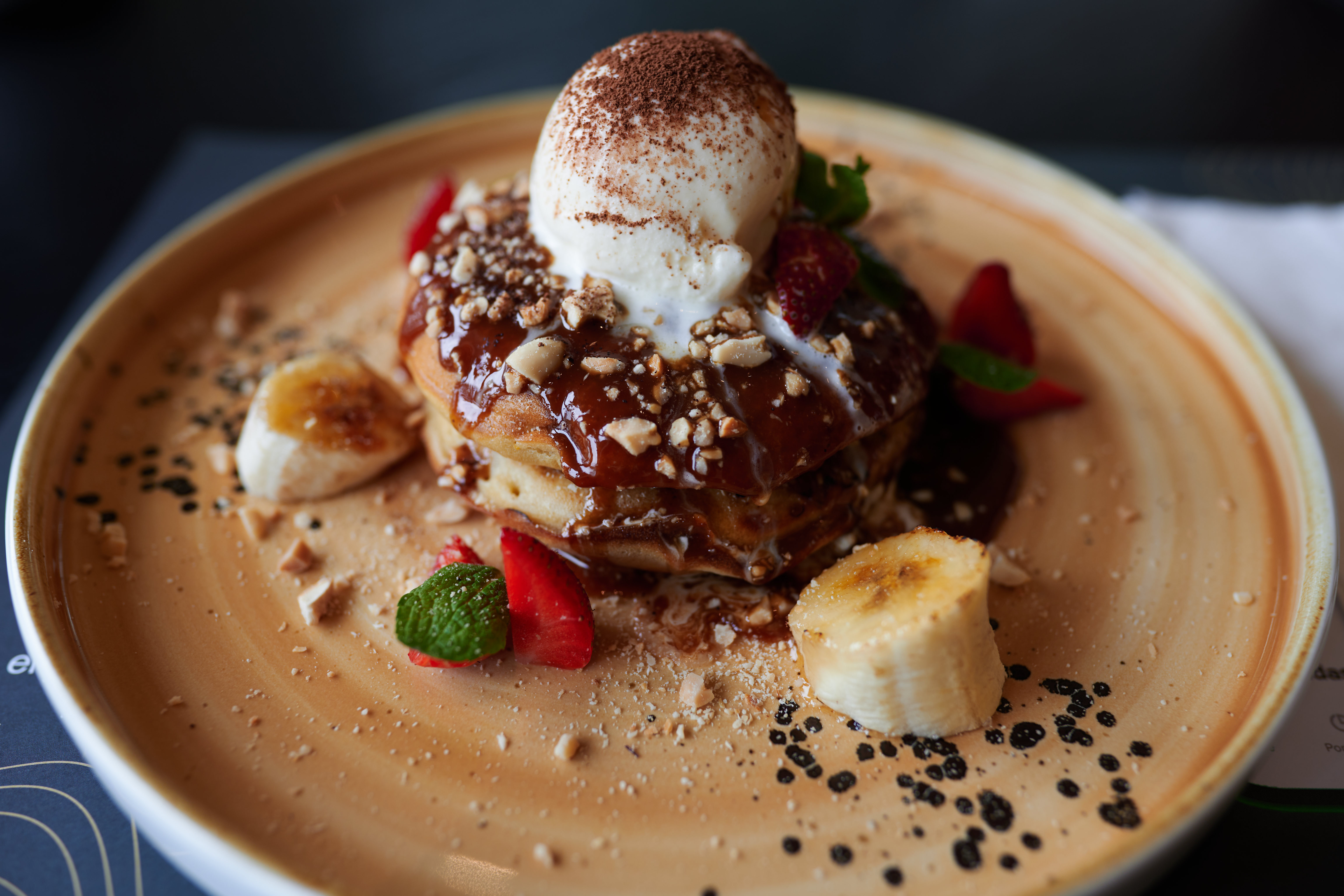The Nikon AF-S Nikkor 28mm ƒ/1.4E ED is a $2000 (US) prime lens. This, on the surface, looks like poor value proposition. After all, even the cheapest kit lens is going to have a 28mm equivalent focal length at its wide end. So a review of this lens needs to start with addressing why someone would even consider paying for this lens.
Unique Qualities of 28mm
Optically, a 28mm1 lens provides a wide field of view, which roughly matches what we see or percieve of our environment. This is unlike, say, 50mm which matches the view that we can pay attention to, minus the peripheral vision. Interestingly, 28mm is also a cross-over point where perspective distortion (relative enlargement of foreground objects) does not make the image look unnatural.
Wide, Undistorted View

This wide, yet natural looking field of view allows (sometimes requires) the photographer to go closer to the scene. This closeness creates dynamic, immersive images that give viewers the illusion of “being there”. Its low distortion profile is perfect for capturing scenes with straight lines and geometric patterns, often seen in architectural or street photography. The lens also renders a strong sense of depth, resulting in images with a three-dimensional quality that invites viewers to explore the different layers.
Environmental portraiture is another area where a large aperture 28mm lens excels. It enables photographers to capture subjects within their surroundings, providing a more contextual representation of the scene.
Neighbourhood Kitty

Essentially, the 28mm prime lens offers unique properties that make it quite versatile. Its wide field of view, low distortion, depth-rendering capabilities, and suitability for environmental portraiture and low light conditions give it a distinct photographic signature that I happen to like.
Body, Handling and Autofocus
The AF-S Nikkor 28mm ƒ/1.4E ED (henceforth called 28/1.4E) is rather large for a prime lens. It is almost as big as a Z 24-120mm ƒ/4 S and slightly heavier. Along with the FTZ adapter, it weighs a bit more than a Z6/Z7ii. It seems more suitable for the larger Z9 or D850 or even a D750. With the smaller Z bodies, it feels just a tad weighty in the left hand.
28mm ƒ/1.4E on Nikon Z7ii

It’s not exactly a handy lens but then, it is 3 stops brighter than the zoom and sharper. Much sharper. It is also lighter than the equivalent Sigma and Zeiss Otus lenses with comparable performance.
The shell of the lens feels very well built and the focus ring turns nice and smooth. The included lens hood has the common snap-on bayonet fit.
Autofocus speed and accuracy of this lens is in the same league as the other ƒ/1.4 primes in F-mount. The focus action is fast, accurate and silent, but it’s not an action photography lens. There’s no focus shift with the change in aperture, although there’s a little bit of focus breathing.
Image Quality
Appearance
The 28/1.4E renders gorgeous images to the extent of being perfect, except for two most obvious flaws – Longitudinal Chromatic Aberration (LoCA) and vignetting.
Wide open, there’s clear purple fringing in the foreground and green fringing in the background. This kind of CA is very hard to correct digitally. Thankfully, it becomes negligible by ƒ/2.8.
The lens also exhibits strong vignetting but it is by no means below the average for large aperture lenses. In real life shooting, this vignetting helps in enhancing the 3-D look for subjects towards the centre (as in the cat photo above). However, I did find it to cause some over-exposure when using Face/Eye-AF for people who are far off the centre.
The 3-D Look

Typical of the house of Nikon, the 28/1.4E presents contrast and colour differentiation in spades. Thanks to the full suite of Nikon’s coatings (Nano Crystal, SIC and Fluorine) it would take some incredibly dull and monochromatic light to make the photos from the 28/1.4E look flat.
Rich Contrast and Colour

The 28/1.4E focuses as close as 28cm (roughly 18cm in front of the lens), which makes for some delightful food pictures. Not to mention, it also has artistic quality bokeh.
Salted Caramel and Banana Pancakes

Sharpness
The performance of this lens wide open is simply outstanding.23 It’s as sharp at ƒ/1.4 as some of the Nikon Z ƒ/4 and ƒ/5.6 zooms, which is astonishing. The lens achieves its peak sharpness at ƒ/2.8, which then falls at ƒ/5.6 and beyond.
Given the stellar performance in test charts, I decided to do some interesting comparisons. First up, wide open comparison between the 28/1.4E at ƒ/1.4 on Z7ii vs. Z 40mm ƒ/2 on Z6. The 28/1.4E was cropped down to match the 40mm focal length, yielding almost 24MP. The Z 40mm on the 24MP Z6 was obviously uncropped.
[28mm f/1.4E] vs 40mm f/2 28mm f/1.4E vs [40mm f/2]![[28mm f/1.4E] vs 40mm f/2](https://live.staticflickr.com/65535/52756623149_e897147ea7_6k.jpg)
![28mm f/1.4E vs [40mm f/2]](https://live.staticflickr.com/65535/52756623189_e9d1582c3a_6k.jpg)
This is an incredible result where, at ƒ/1.4, the cropped 28/1.4E still marginally outresolves the Z 40/2 in the centre and towards the edges. The Z 40/2 pulls ahead only in the mid-frame, perhaps due to differences in depth of field. Basically, having a 28/1.4E on a Z7ii is like carrying a virtual Z6 with Z 40/2 alongside. The Z 40/2 on a Z6 makes for a compact kit, but it’s still not as compact as a virtual camera!
Next up, an even more difficult challenge against the highly regarded Nikon Z 50mm ƒ/1.8 S. The 50/1.8 S is considered to be amonth the sharpest primes in Nikon’s line-up. For this test, I mounted the 50/1.8 S it on the 24MP Z6 while mounting the 28/1.4E on the Z7ii and cropping down to match the field of view. This time, both lenses were shot at ƒ/4.
Z 50mm f/1.8 S on Z6 vs [28mm f/1.4E on Z7ii cropped] [Z 50mm f/1.8 S on Z6] vs 28mm f/1.4E on Z7ii cropped![Z 50mm f/1.8 S on Z6 vs [28mm f/1.4E on Z7ii cropped]](https://live.staticflickr.com/65535/52785084241_2eb826466d_4k.jpg)
![[Z 50mm f/1.8 S on Z6] vs 28mm f/1.4E on Z7ii cropped](https://live.staticflickr.com/65535/52785322964_f9dd29fb29_6k.jpg)
Despite the 28/1.4E crop being only 14MP, it holds up pretty well against the 24MP uncropped shot from the 50/1.8 S. Viewed at 300 DPI, there are no details that seem to be missing from the cropped shot. Only at 150 DPI, some shapes appear to be more well defined in the 24MP photo from the 50mm compared to the 14MP from 28mm.
This is phenomenal performance that basically means that in real world scenarios, the 28/1.4E can easily be cropped down to DX in-camera and even beyond in post-processing while still yielding compelling results. It’s like having a 28-70mm ƒ/1.4-3.5 zoom in terms of output, but thanks to its ƒ/1.4 aperture, the prime would continue to perform in low light situations where an ƒ/3.5 lens might struggle with AF and shutter speed.
In the previous post I mentioned that I needed a general purpose prime lens and concluded (reluctantly) that that general purpose prime lens must be a 28mm. This versatile performance enabled by the extremely sharp lens paired with high resolution cameras made it a convincing choice.
Conclusion
The AF-S Nikkor 28mm ƒ/1.4E is an outstanding prime lens that’s well worth its price in the way it opens up new opportunities to create engaging, three dimensional photographs that are meant to be viewed at very large screen/print sizes.
Bokehlicious

The incredible sharpness right from the widest aperture combined with rich colour and contrast as well as excellent bokeh characteristics also make this lens a great tool for capturing the atmosphere at parties, events and travel.
In short, it’s a game changer.
AF-S Nikkor 28mm ƒ/1.4E Sample Photos
28mm on a full frame (36mm x 24mm) sensor. Any lens + sensor combination that gives a 75º diagonal field of view fits this description. This would be 18mm on APS-C, 14mm on micro four-thirds, 10.5mm on 1" and 4.8mm on 1/2.3" sensors. ↩︎